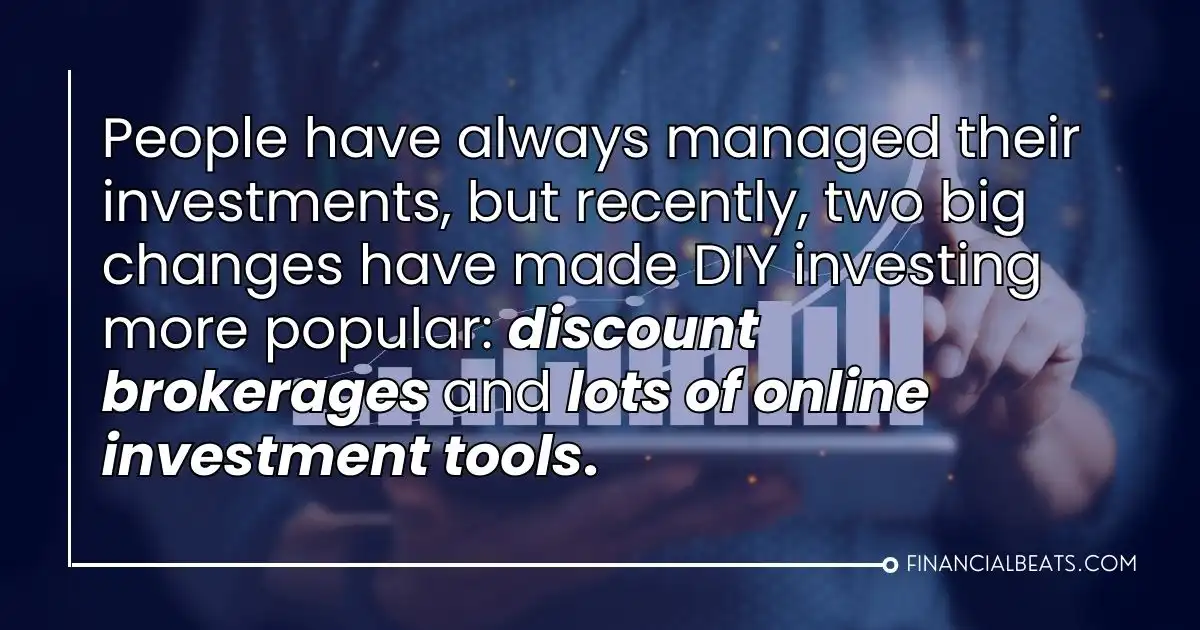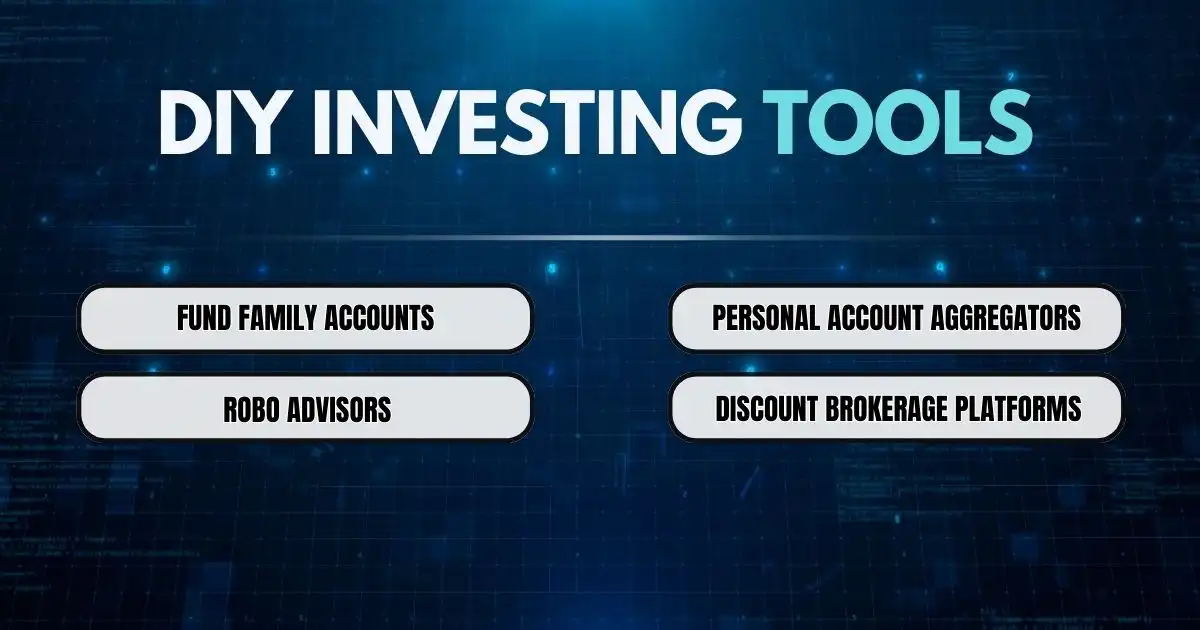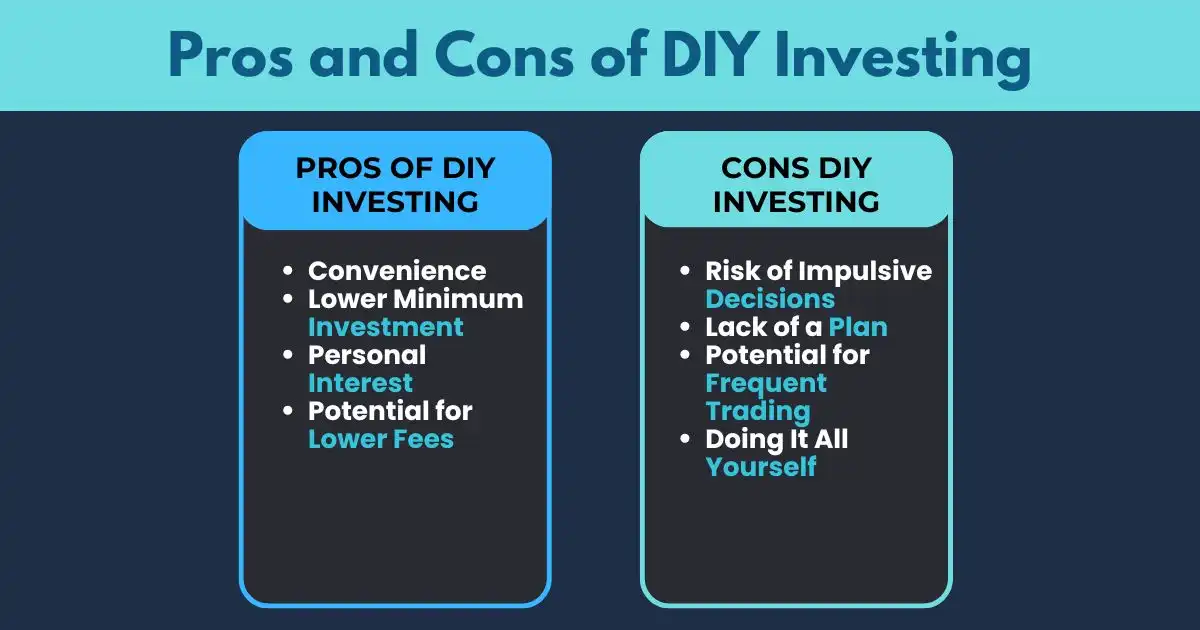Are you tired of watching your money sit idle while relying on others to manage it?
Many people feel overwhelmed by investing, believing it’s only for the wealthy or the experts. But what if there was a way to take control of your financial future without needing a financial advisor?
Investing is a fundamental part of achieving financial empowerment. We are dedicated to empowering our clients, readers, and everyone we connect with. Financial independence and opportunity are at the heart of what we do.
We understand that many people feel the most straightforward and effective way to invest is to do it yourself.
What Is DIY Investing?
Do-it-yourself (DIY) investing is when regular people decide to create and manage their own investment portfolios. This means they choose where to put their money instead of relying on someone else. It’s also called self-directed investing.
Most DIY investors use discount brokerages and online investment platforms instead of full-service brokerages or professional money managers. This allows them to save money on fees and have more control over their investments.
How DIY Investing Works

People have always managed their investments, but recently, two big changes have made DIY investing more popular: discount brokerages and lots of online investment tools. These changes make it easier for investors to create and customize their portfolios. They’ve also introduced new ways to get financial advice for free through interactive tools.
When building a DIY portfolio, investors can choose different paths. Some might want to invest entirely on their own using a discount brokerage platform, where they pay fees for each transaction. Others may prefer a semi-DIY approach that uses automated robo-advisors, which only charge a small fee.
Things to Think About Before You Begin DIY Investing

Don’t just go along with the crowd. DIY investing isn’t suitable for everyone. It demands planning, research, and a significant time commitment. Depending on your availability and level of knowledge, working with a traditional advisor might be a better choice.
Can you handle the emotional ups and downs? If you need your invested money in the short term, investing in stocks that can quickly rise or fall may not be the best option for you. Market fluctuations can be stressful.
Guessing can be a dangerous investment strategy. Not understanding the investment products you’re buying and selling is one of the leading causes of losing money. Be sure to thoroughly research any investment before you buy, and know exactly what you’re adding to your portfolio.
Pro-Tip
Create an investment plan that suits your needs and aligns with your risk tolerance. Regularly review it to reflect your goals. Choose reliable sources for investment information. Be cautious of advice from celebrities or social media influencers, as they may not have your best interests in mind.
Only invest what you can afford to lose, as the market can be unpredictable and you might sell at a loss in urgent situations. Finally, be aware that investing for retirement can be complex, and significant losses may reduce your savings when it’s time to retire.
DIY Investing Tools
For DIY investors, picking the right discount brokerage platform is important for creating a well-managed portfolio. It’s also essential to find personal investment account aggregators to help you look at your investments as a whole.

Fund Family Accounts
Fund family accounts are a good option for investors who want to build portfolios using open-end mutual funds directly with the fund company. A DIY investor can create multiple fund family accounts or stick with one investment company for all their needs.
Fund family accounts also come with exchange privileges, allowing you to swap funds within the same family. These exchanges usually have low or no transaction costs and can help you manage your investments through different market conditions. They also allow DIY investors to adjust their investments from aggressive to conservative as they approach retirement.
Robo Advisors
Robo advisors let investors automate their portfolios using strategies based on modern portfolio theory. These portfolios often have low annual advisory fees and usually rely on low-cost index funds. Robo advisors also provide frequent rebalancing, helping investors keep their portfolio allocation aligned with their goals and avoid any drift.
Personal Account Aggregators
With so many platforms and accounts to choose from, many DIY investors use personal account aggregators to monitor their budgets and investments in one place. Services like Betterment and Quicken combine automated investing with financial planning tools and recommendations.
Discount Brokerage Platforms
Online self-directed brokerage platforms vary widely, with options like E-TRADE, TD Ameritrade, and Robinhood being entirely digital. Many financial institutions and banks, such as Citibank and Wells Fargo, also offer self-directed accounts.
Vanguard is a popular choice for DIY investors, providing managed funds and custom retirement accounts, while Merrill Lynch attracts users with its Merrill Edge platform.
In the past two decades, most discount brokerages have transitioned online, allowing you to choose your investments while providing research tools and expert insights to assist in your decision-making.
Most platforms don’t charge commissions for stock trades, but some may charge between $0.50 and $1.00 per options contract. If you plan to make only a few trades each year, it may be worth paying more for better research. Conversely, day traders might prefer platforms that offer free trades.
Pros and Cons of DIY Investing
DIY investing has its advantages and disadvantages that every investor should consider:

- Convenience – DIY investors can easily trade online, making it simple to buy and sell stocks and other investments through a website or app. They also have access to research, stock quotes, trading information, and interactive charts to track their investments in real time.
- Lower Minimum Investment – unlike some financial advisors who require a high minimum amount to start, DIY investors can begin with a smaller investment.
- Personal Interest – Many DIY investors enjoy the process and dedicate a few hours each week to managing their money and researching companies they want to support. This allows them to invest in products and industries that genuinely interest them.
- Potential for Lower Fees – DIY investors typically trade through discount brokerages, which means they pay lower commissions and fees. However, these brokerages do not provide advice on the suitability of investments.
However, DIY investing also has some risks:
- Risk of Impulsive Decisions – trading on a phone or computer can lead to hasty actions. Market ups and downs are normal, but they can make investors act on emotions instead of sticking to their plans. Some may feel pressure from the fear of missing out (FOMO) and quickly buy popular stocks.
- Lack of a Plan – while many DIY investors enjoy the process, they might miss the bigger picture. If they don’t have clear goals or understand how investing fits into their overall financial plan, it can be challenging to know if they are making the right choices.
- Potential for Frequent Trading – The speed of online investing can lead DIY investors to trade too often, resulting in high transaction fees that reduce their profits.
- Doing It All Yourself – self-directed investors must do their own research, decide what to buy, and monitor their investments. This requires time and knowledge to make smart choices and follow a plan that diversifies their investments.
Take Charge of Your Financial Future
As you begin your journey into DIY investing, remember that you have the power to shape your own financial future. This path isn’t just about money; it’s about creating opportunities and building a future that reflects what you care about. With the right tools and knowledge, you can develop an investment strategy that matches your personal goals.
It might seem challenging at times, but the benefits of managing your investments can be great. Don’t let fear stop you from trying. Now is the perfect time to take action and see what you can achieve. Each step you take towards understanding and managing your investments brings you closer to being financially independent. The time to start is now!
FAQs
What does it mean to invest in yourself?
Investing in yourself means taking the time, resources, and effort to improve your skills, knowledge, and overall well-being. This can include education, training, health, or personal development. By enhancing your abilities, you increase your potential to generate income and achieve financial success.
How can I make my own money?
To make your own money, you can explore various income-generating opportunities such as starting a side business, freelancing, or investing in stocks and real estate. Additionally, by investing in yourself, you can improve your skills and increase your earning potential in your current job.
What is an alternative investment platform?
An alternative investment platform is a financial service that allows you to invest in non-traditional assets, such as real estate, cryptocurrencies, or commodities. These platforms can provide access to investment opportunities outside of standard stocks and bonds, diversifying your portfolio.
What is DIY wealth management?
DIY wealth management refers to the practice of managing your investments and financial planning without the assistance of professional advisors. This approach allows you to take control of your financial decisions, make your own investment choices, and potentially save on management fees.
